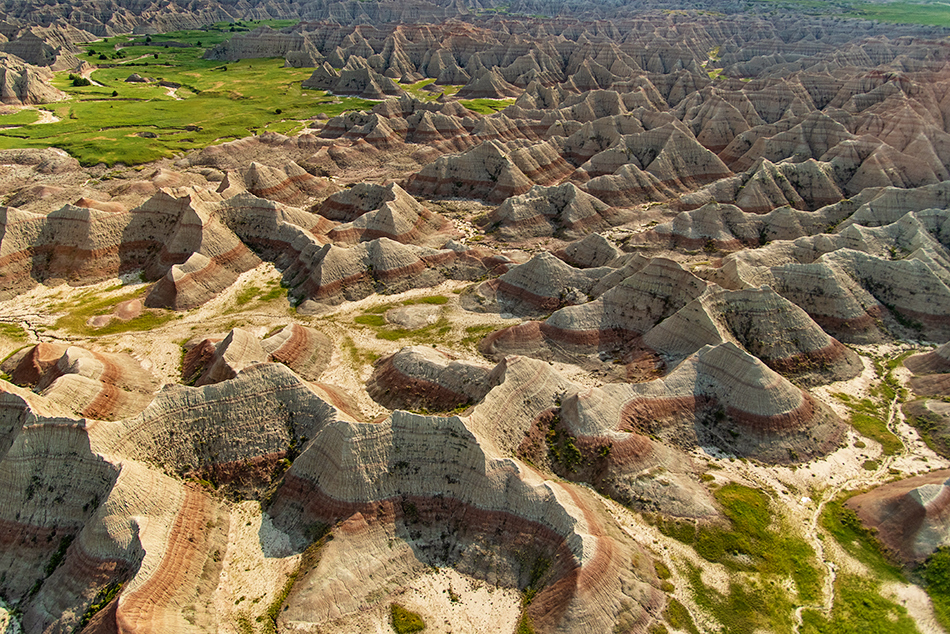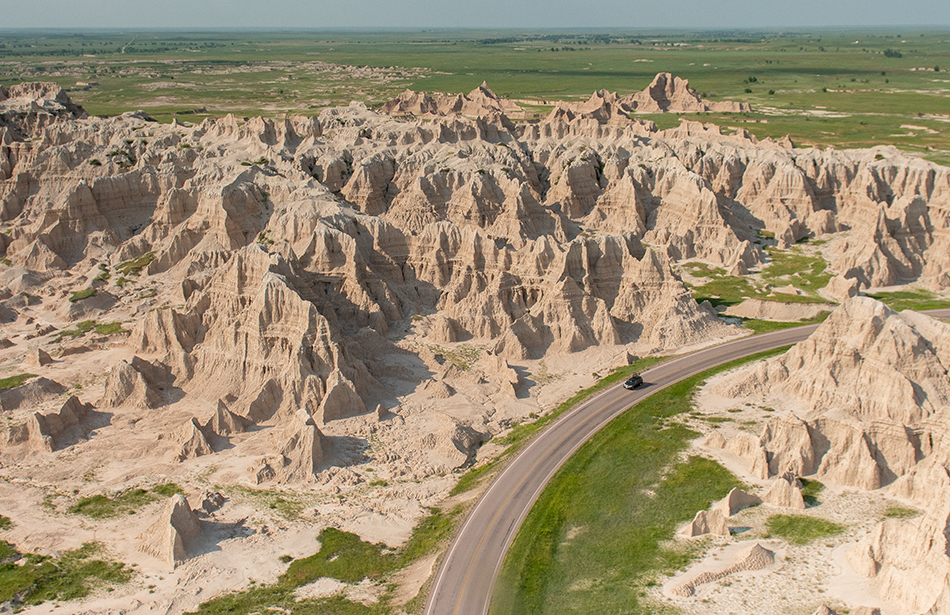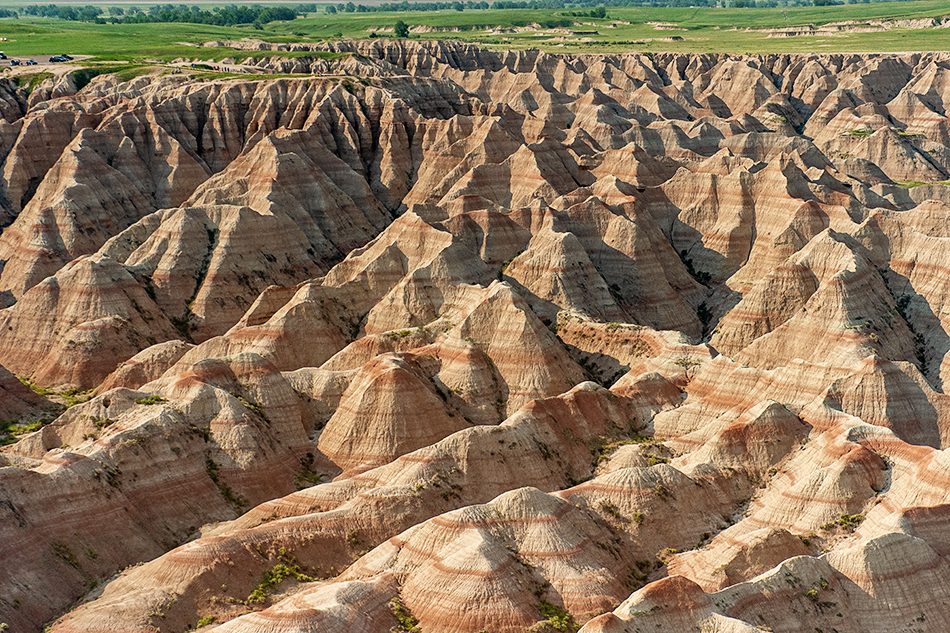
Wall, South Dakota. Badlands NP
Each year I find myself going up in small planes and helicopters to photograph. Some of my most memorable shoots have been in the air. Many years ago I photographed an air service in Alaska. To get the shot, we took the doors off my plane for unobstructed shooting, and flew around Denali shadowing the other plane. Photographing a bush plane in the rugged Ruth Gorge was a sublime moment. All while hanging out the door of a small plane trying to get the shot!
A few days ago I was up in the air again, this time in a helicopter in Badlands National Park. While most national parks look good from the air, the rugged geology of Badlands looks fantastic from the air. We took a short ride around the east end of the park, and got a number of nice shots. Flying is easier than ever before. Many tourist and travel destinations have scenic flight options. Use these tips to get the best ratio of keepers during your shoot.

Wall, South Dakota. Badlands NP
-make sure you have a full battery, plenty of flash card space, and the right lens attached. Pilots don’t like passengers fumbling with anything that could get loose during the flight.
-my favorite lens in the 24-120mm F4 VR. This focal length generally is about right, and VR is very helpful getting sharp images with slow shutter speeds. Lens choice will be affected by how close your pilot flies to the ground, and how fast they are moving.
-crank up the ISO. Rather than depend on VR to get sharp images, I like to shoot at very fast shutter speeds around 1/4000, which isn’t a problem in daylight. The helicopter or small plane will have vibrations and turbulence, so shoot fast to eliminate shaky shots.
-shoot wide open, or close to it. Most aerial shooting is from high in the sky, and you don’t need a lot of depth of field. I often shoot at F4 or F5.6, which helps maintain fast shutter speeds. If your pilot get you really close to a subject, then you might have to increase depth of field, but generally they don’t like to get close to objects!
-take off your lens hood. I like to cup my hand around the front of the lens and get as close to the plexiglass as I can. A lens hood can fall off in the cabin, get blown off in doors-off shooting, and prevents you from getting close to the glass to minimize reflections. Don’t touch the plexiglass, just get close to it. Scratching plexiglass is a big no no.
-wear dark clothing. plexiglass cabins reflect a lot; you don’t want your white shirt showing up in all your images. Wear dark clothing to minimize reflections and your retouch time in the computer later.

Wall, South Dakota. Badlands NP
-shoot a lot. Aerial shooting often involves a pilot flying a set route, with limited flexibility to get you the perfect angle. So just keep hitting the shutter so you have lots of images to choose from later.
-go out early/late. Landscapes from above come alive with shadows, so try to schedule your flight early in the morning or evening. Midday shooting won’t be great for shadows on landscapes, but flying over glaciers in Alaska midday looks great. Same for photographing humpback whales off the Kauai coastline.
-don’t get sick. Bouncing around in a helicopter while looking through a camera can cause some folks to get motion sickness. Take some motion sickness pills before your flight if you think this is a possibility.
And lastly, have a blast. Photographing from high in the sky is exciting, and a familiar landscape transforms into a graphic medley of shape, form and color. Next year on our Badlands workshop we will be scheduling time for aerials. Come join us for some aerial shooting!